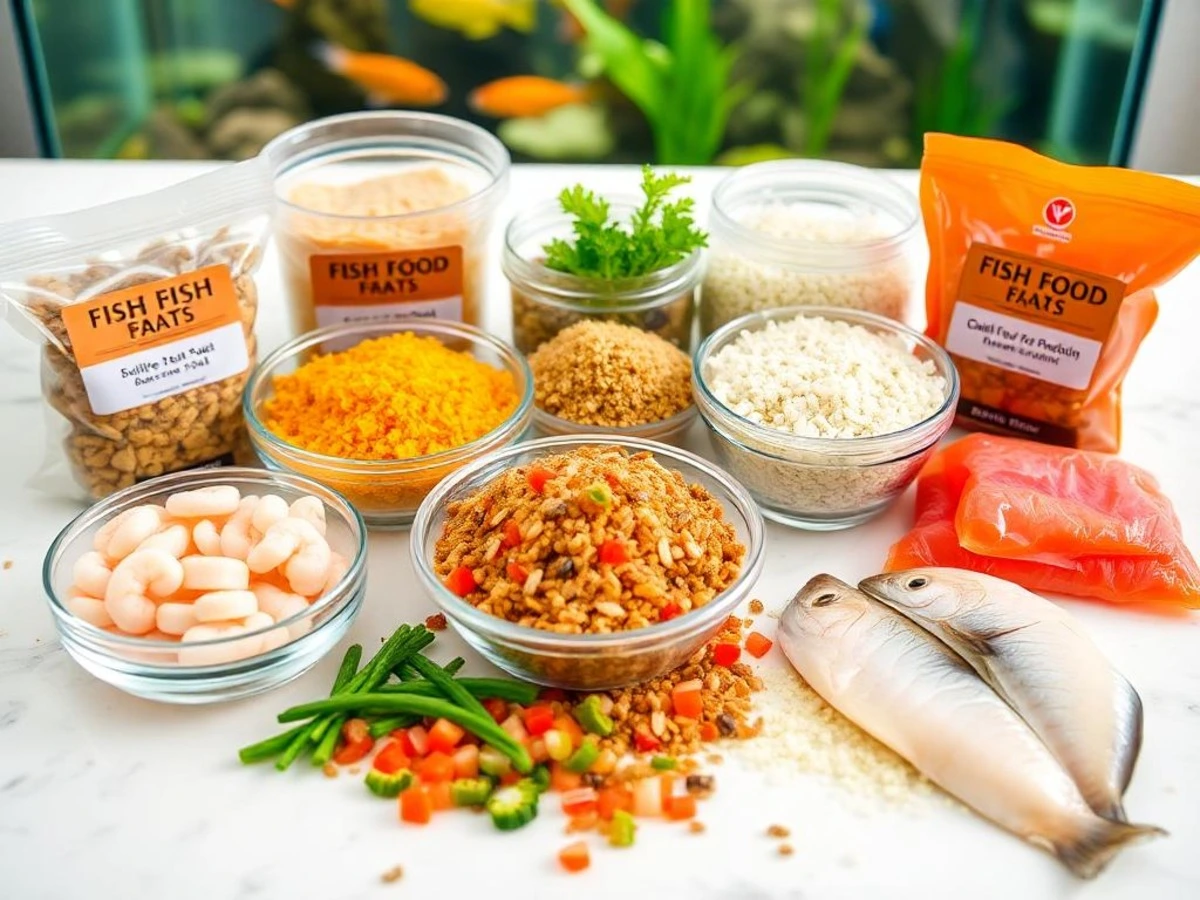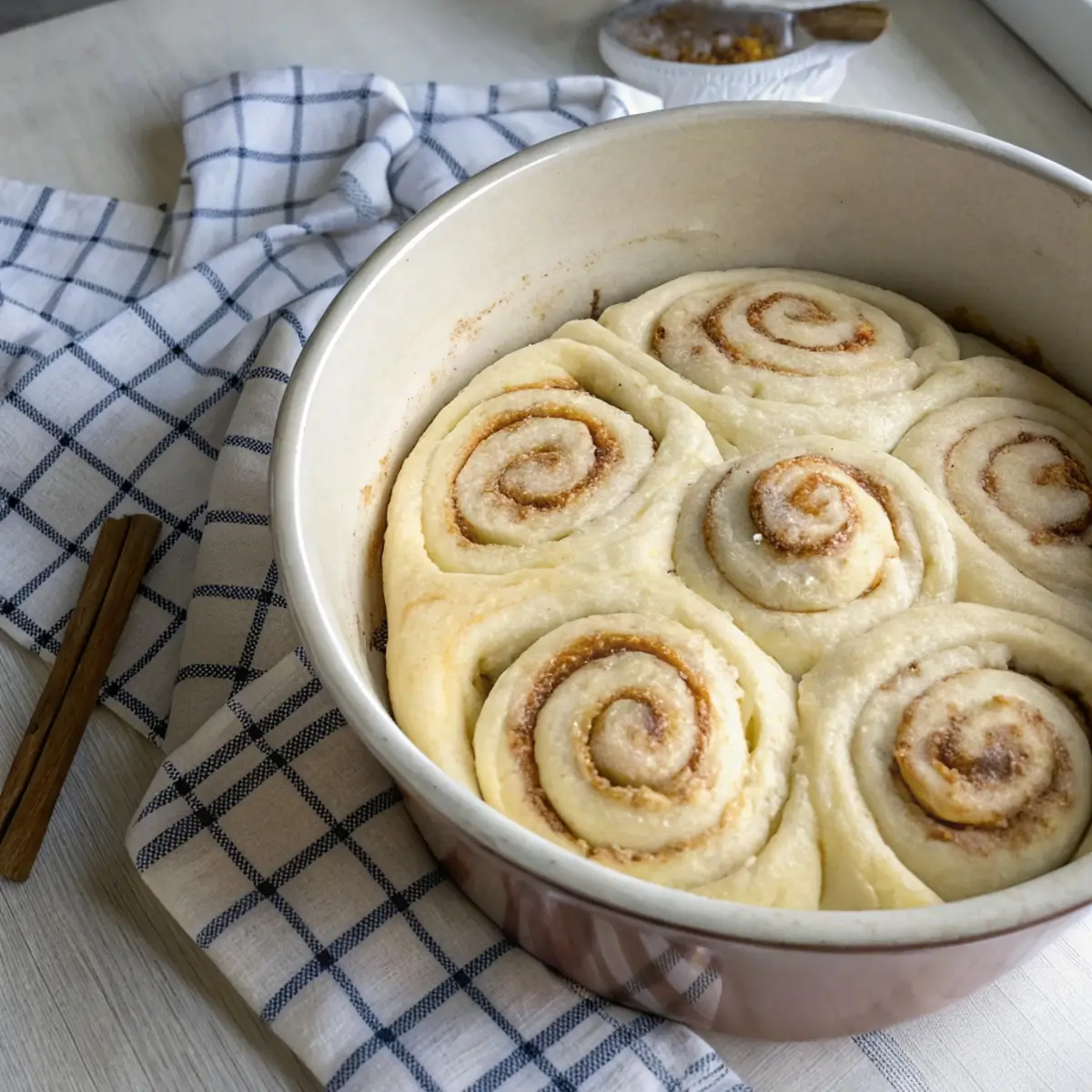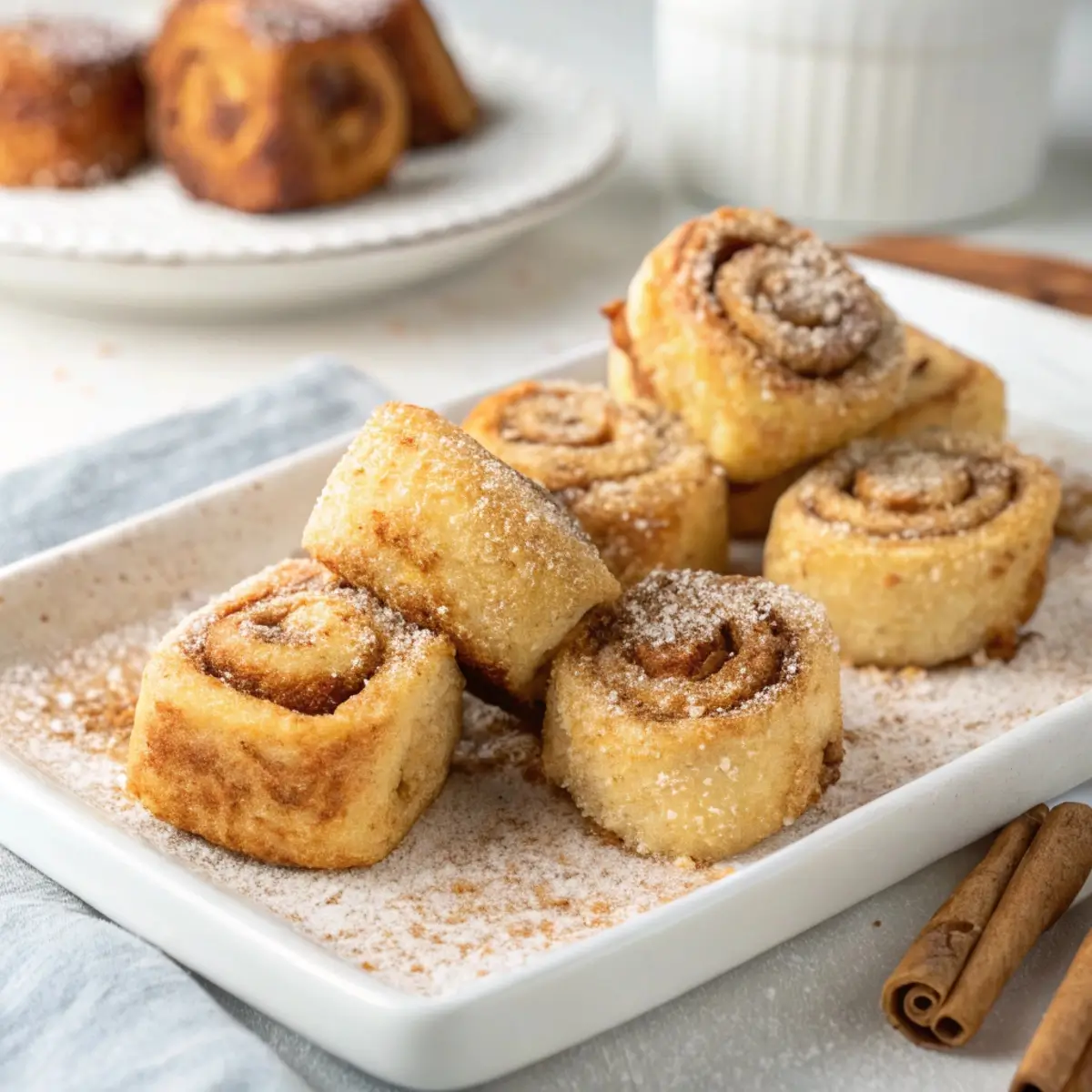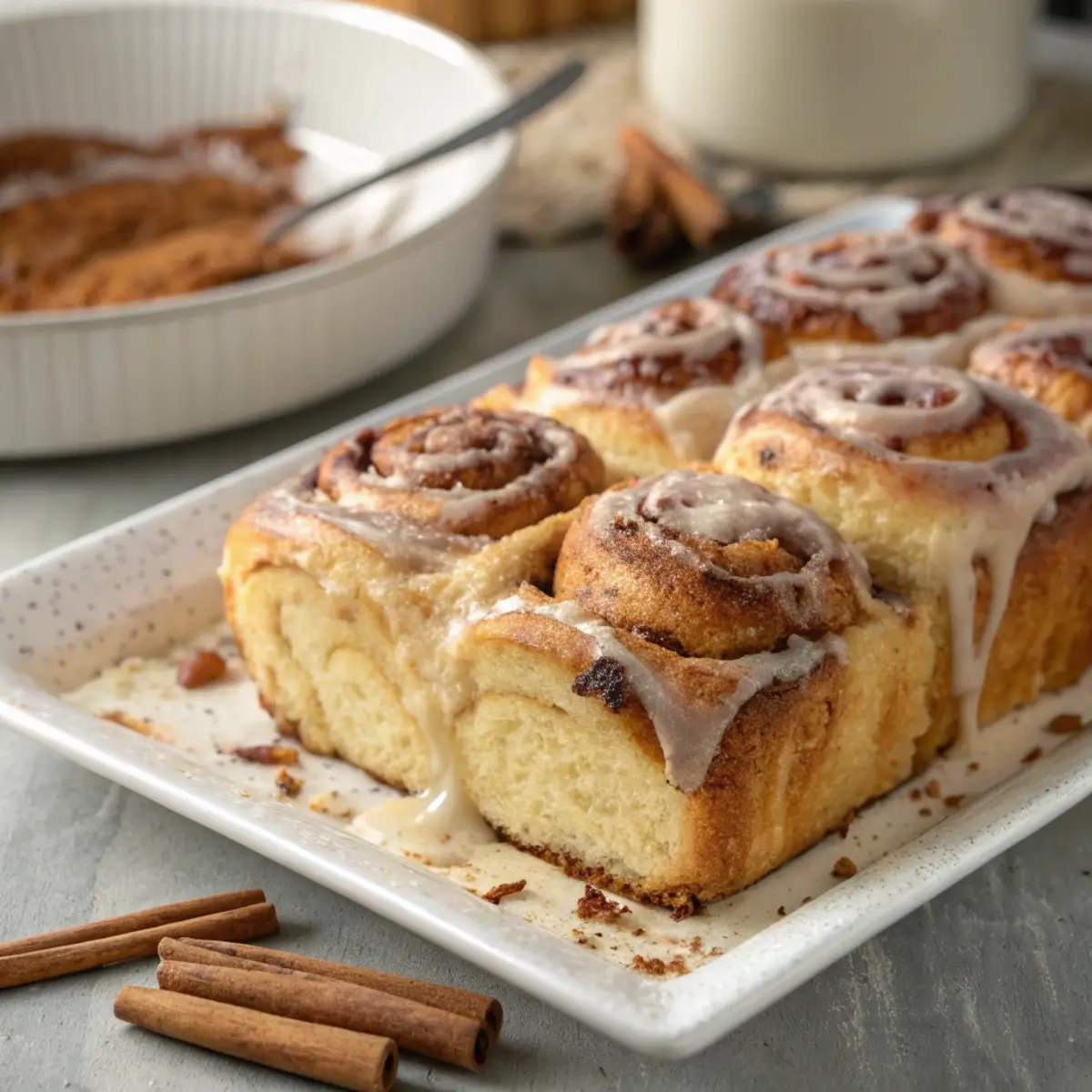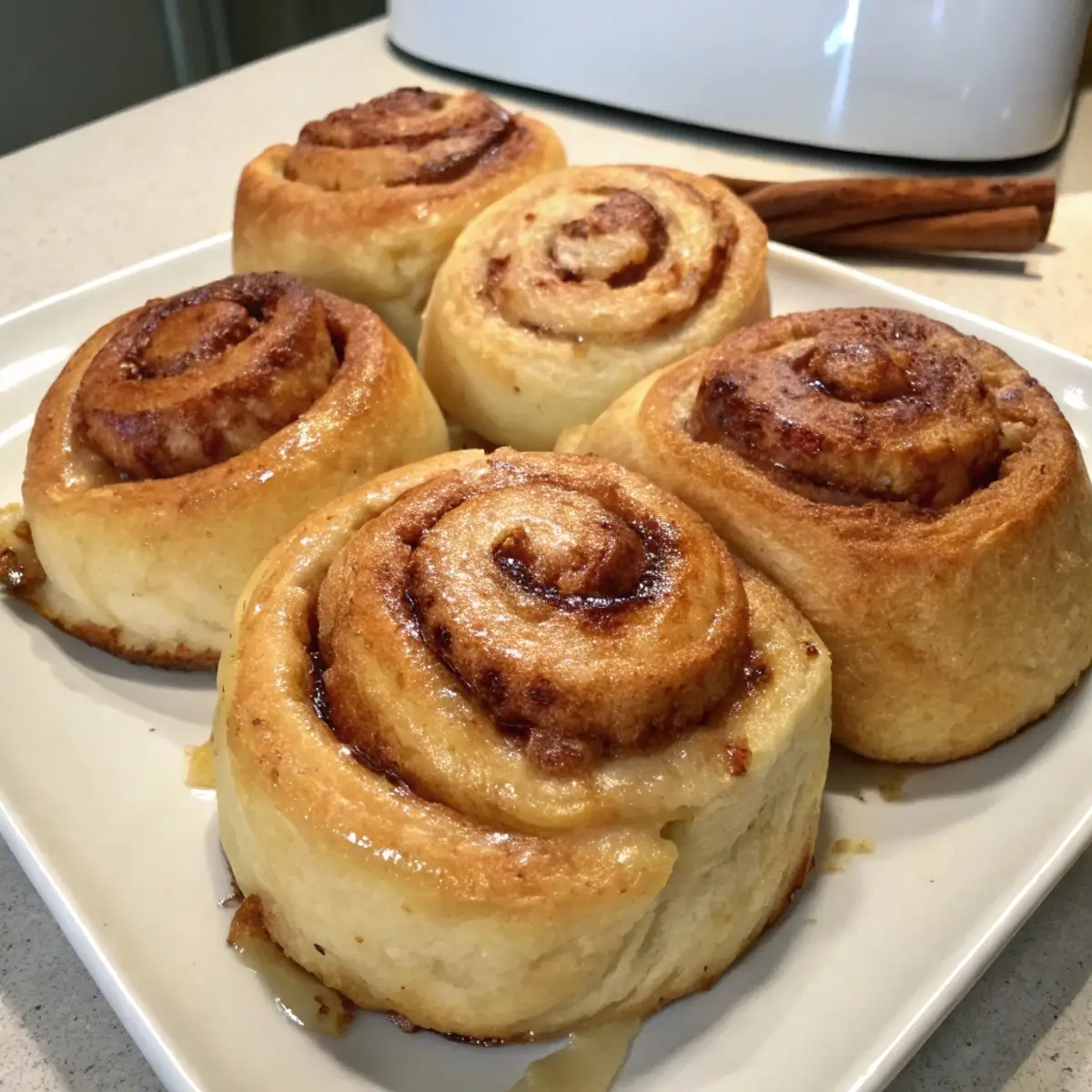Table of Contents
- 1 Why Homemade Fish Food is Beneficial
- 2 Key Ingredients for Homemade Fish Food Recipe
- 3 Who Should Use Homemade Fish Food Recipe?
- 4 Types of Fish Food Recipe
- 5 Popular Fish Food Recipe Ideas
- 6 Step-by-Step Fish Food Recipe Guide
- 7 Fish Food Recipe Variations and Tips
- 8 Storing and Serving Fish Food
- 9 FAQs About Fish Food Recipes
- 10 Conclusion
Are you looking to provide your fish with the best possible nutrition? Creating your own fish food recipe is a fantastic way to ensure your aquatic pets get fresh, healthy meals tailored to their specific needs. Whether you’re feeding betta fish, goldfish, or tropical species, homemade fish food can offer superior benefits over store-bought options. In this guide, we’ll explore various fish food recipes, from DIY fish food for goldfish to nutritious meals for tropical fish, so you can give your pets the nourishment they deserve.
Why Homemade Fish Food is Beneficial
Homemade fish food offers a number of perks that go beyond what you can get from store-bought options. Let’s take a look at some of the major benefits:
Control Over Ingredients
When you make your own fish food recipes, you have full control over the ingredients. You don’t have to worry about fillers, preservatives, or unnecessary chemicals that are often found in commercial fish food. This means that you can pick high-quality ingredients tailored to the specific needs of your fish.
Healthier Options for Your Fish
Using fresh ingredients ensures that your fish are getting a more nutritious meal compared to pre-packaged alternatives. Many fish food recipes in the market are processed, losing vital nutrients in the process. With homemade food, you can pack in nutrients that will boost their immune system, promote growth, and enhance their color.
Cost-Effectiveness
Believe it or not, making your own fish food can be cheaper than buying commercial products. With ingredients like vegetables, fish protein, and natural supplements, you can prepare large batches of food for a fraction of the cost of store-bought options. Plus, you can store homemade fish food for months, making it a budget-friendly option.
Avoiding Harmful Additives in Commercial Fish Food
One of the most significant advantages of homemade fish food is that you know exactly what’s in it. Many commercial fish foods contain artificial colors, preservatives, and other additives that could harm your fish over time. By opting for homemade recipes, you can avoid these harmful substances and give your fish a more natural, healthier diet.
Key Ingredients for Homemade Fish Food Recipe
Creating your own Fish Food Recipe involves using fresh, nutritious ingredients that will benefit your fish in various ways. Here are the main components you’ll need to include:
Proteins
Fish need a good source of protein for muscle growth and overall health. Common proteins used in fish food include shrimp, fish fillets, and even chicken liver. If you’re preparing food for carnivorous fish, you might focus more on animal-based proteins, while omnivorous and herbivorous fish may require a mix of plant and animal protein sources.
Vegetables and Greens
Don’t forget the veggies! Many species of fish, especially herbivores like goldfish, love to nibble on leafy greens. You can incorporate ingredients like spinach, peas, or zucchini into your fish food recipe. These vegetables are packed with essential vitamins and minerals that promote good digestion and overall health.
Fish Oil and Supplements
To round out your homemade fish food recipe, adding fish oil can provide omega-3 fatty acids, which help maintain a healthy coat and vibrant colors in your fish. Additionally, supplements like spirulina, vitamins, and minerals can boost the nutritional value of your food.
Natural Color Enhancers
Some fish, especially ornamental types like goldfish and bettas, can benefit from natural color enhancers. Ingredients like spirulina, carotenoids (found in carrots and other vegetables), and astaxanthin (a pigment in algae) help enhance their natural colors.
Who Should Use Homemade Fish Food Recipe?
Homemade fish food isn’t just for experienced hobbyists. It’s for anyone who wants to ensure their fish are eating the best possible food. But who should really consider switching from store-bought food to DIY options?
Ideal for Freshwater Fish
Freshwater fish, like goldfish and guppies, thrive on a variety of fresh foods that are easy to replicate in a homemade recipe. With the right ingredients, you can provide them with a balanced diet that supports their growth and vitality.
Best for Tropical Fish
Tropical fish, such as tetras, angelfish, and gouramis, also benefit from homemade fish food recipe. These species often require a mix of plant and animal proteins, which can be easily incorporated into DIY food. Plus, homemade recipes are often fresher and more nutritious than what you’d find in a store.
Can Saltwater Fish Benefit from Homemade Recipes?
Saltwater fish can also benefit from homemade food, though their diet is often more specialized. DIY recipes for saltwater species require a careful balance of protein and specific nutrients, which you can achieve by using seafood like squid, shrimp, and fish, combined with algae and other sea vegetables.
Types of Fish Food Recipe
Creating your own fish food means you have the flexibility to choose from various types of recipes depending on what works best for your fish and your kitchen. Let’s explore the different types of homemade fish food you can try out!
Fish Food Patties
One of the easiest ways to make homemade fish food is by creating fish food patties. These compact, bite-sized servings are perfect for feeding a variety of fish. You simply blend your ingredients—such as proteins (fish, shrimp, or chicken), vegetables, and fish oil—into a paste. Then, mold the paste into small patties. Afterward, you can freeze them for later use. Fish food patties are especially good for larger fish or those that need a more substantial meal.
Gel-Based Fish Food
If you’re looking for a more versatile option, gel-based fish food is a great choice. This recipe uses gelatin or agar-agar as a base to hold the ingredients together, making it easy to mold into shapes that suit your fish. The gel holds in all the nutrients and keeps the food moist, making it perfect for feeding both herbivorous and carnivorous fish. Plus, gel-based fish food can be stored in the fridge for a few days or frozen for longer-term use.
Fish Flakes
For those who prefer a more traditional fish food type, fish flakes are a fantastic option. They are easy to make and can be stored in airtight containers for long periods. To make fish flakes, simply blend your ingredients into a smooth paste, spread it thinly on a baking sheet, and dehydrate the mixture. Once it’s completely dry, break it into flakes. You can even adjust the thickness of the flakes based on the type of fish you’re feeding.
Frozen Fish Food
Frozen fish food is incredibly popular because it’s super convenient and retains all of the nutrients. To make frozen fish food, prepare a mixture of your desired ingredients—like vegetables, fish proteins, and omega-3 oils—and then portion them into ice cube trays or silicone molds. After freezing, you can pop out individual servings, thaw them, and feed them to your fish. Frozen fish food works best for tropical or coldwater species and is especially good for feeding fish that require larger portions.
Popular Fish Food Recipe Ideas
Now that you have an understanding of the different types of homemade fish food, let’s explore some specific fish food recipe ideas you can try for various species of fish.
DIY Fish Food Recipe for Betta Fish
Betta fish are carnivores that need a high-protein diet. A simple DIY recipe involves blending fish fillets (like tilapia or salmon) with a bit of shrimp and fish oil. Add a small amount of spinach or peas for extra vitamins. You can form this mixture into patties or even freeze it into small cubes. Betta fish will enjoy the high protein, and the omega-3s will help maintain their vibrant colors.
Tropical Fish Food Recipe
Tropical fish, such as tetras, angelfish, and guppies, thrive on a varied diet. A balanced tropical fish recipe includes a mix of proteins like shrimp, fish, and chicken, combined with vegetables like spinach, zucchini, or peas. You can blend everything into a paste, then use it to make gel-based food or freeze portions in small molds. Tropical fish will benefit from this nutrient-packed meal, which supports their immune system and enhances their colors.
Goldfish Food Recipe
Goldfish are primarily herbivores and need a diet rich in vegetables and greens. For a goldfish food recipe, blend ingredients like spinach, peas, and carrots, adding a small amount of fish protein to round out their diet. You can form these into patties or freeze them for long-term storage. Goldfish will enjoy the variety of flavors, and the extra fiber will aid in digestion.
Shrimp Food Recipe
Shrimp, especially those in aquariums, need a diet rich in both plant and animal matter. A simple shrimp food recipe might include a combination of fish flakes, algae, spirulina, and small bits of fish or shrimp meat. You can blend this into a paste and form it into gel or freeze it into cubes. This recipe will provide them with the necessary protein, vitamins, and minerals for a healthy diet.
DIY Koi Fish Food Recipe
Koi fish, like goldfish, are primarily herbivorous but also need some protein in their diet. A DIY koi food recipe might include vegetables like lettuce, peas, and carrots, mixed with a bit of fish fillets or shrimp. You can make a gel-based food or simply freeze it in small cubes. This combination of vegetables and protein will ensure your koi get a well-rounded diet that supports their growth and vibrant colors.
Step-by-Step Fish Food Recipe Guide
Homemade fish food recipe doesn’t have to be complicated! With a few basic ingredients and simple steps, you can create a nutritious meal for your aquatic friends. Let’s break down some easy-to-follow recipes that will help you get started.
Basic DIY Fish Food Recipe
Making your own fish food allows you to ensure the freshness and quality of the ingredients. Here’s a basic, versatile recipe that you can adjust to suit your fish.
Ingredients Needed
- 1 cup of fish protein (such as fish fillets or shrimp)
- 1/2 cup of spinach or peas
- 1/4 cup of fish oil or cod liver oil
- 1 tablespoon of gelatin or agar-agar (to bind the ingredients)
- 1/4 cup of spirulina powder (optional for added color enhancement)
Preparation Method
- Cook the Protein: Start by cooking your fish or shrimp. If you’re using fish fillets, bake or steam them. You can also blend raw shrimp for a more natural mix.
- Prepare the Vegetables: Blanch the spinach or peas in boiling water for about 2-3 minutes, then drain and cool them down in ice water. This will help retain the nutrients and color.
- Blend Ingredients: Add the cooked protein, vegetables, fish oil, and spirulina powder (if using) into a blender or food processor. Blend until smooth and uniform.
- Thicken the Mixture: In a separate bowl, dissolve the gelatin in a small amount of warm water. Once dissolved, mix it into the blended paste to bind everything together.
- Form and Freeze: Pour the mixture into an ice cube tray, silicone molds, or shape into small patties. Freeze for long-term storage.
How to Store Homemade Fish Food
Homemade fish food should be stored in an airtight container to prevent spoilage. You can freeze it for several months, ensuring it remains fresh. If you’ve made smaller portions, simply pop them out of the molds and store them in freezer bags for easy access. If you’re storing it in the fridge, make sure to use it within a week.
Step-by-Step Guide for Betta Fish Food
Betta fish are carnivorous and need a high-protein diet. This DIY Betta fish food recipe is packed with protein and essential nutrients, ensuring your Betta stays vibrant and healthy.
Ingredients for Betta Fish
- 1/2 cup of fish fillets (such as tilapia or salmon)
- 1/4 cup of shrimp
- 1 tablespoon of fish oil
- 1/4 cup of spinach (blanched)
- 1 teaspoon of spirulina powder (optional)
Preparation and Cooking Process
- Cook the Protein: Start by steaming the fish fillets and shrimp. After they’re cooked, chop them into small pieces or blend them into a smooth paste.
- Prepare the Greens: Blanch the spinach in boiling water for 2-3 minutes and then cool it down in ice water. Chop the spinach into small pieces.
- Blend the Mixture: Combine the cooked fish, shrimp, spinach, and fish oil in a food processor. Add the spirulina powder for extra color enhancement if desired.
- Form the Food: Form the mixture into small patties or press it into ice cube trays for easy serving. Freeze the patties or cubes until firm.
Storage and Serving Tips
- Storage: Like the basic recipe, you can store Betta fish food in the freezer for up to three months. Keep it in an airtight container to maintain freshness.
- Serving: Thaw the portion you need and feed it to your Betta. Offer one or two small portions daily, depending on your Betta’s appetite.
Tropical Fish Food Recipe (For Multiple Species)
Tropical fish require a balanced diet consisting of both animal protein and plant matter. This recipe is perfect for a variety of tropical species such as tetras, guppies, and angelfish.
Key Ingredients for Tropical Fish
- 1/2 cup of fish fillets (tilapia, cod, or similar)
- 1/4 cup of shrimp (small pieces)
- 1/4 cup of zucchini (blanched)
- 1/4 cup of spinach (blanched)
- 1 tablespoon of fish oil
- 1 teaspoon of spirulina or chlorella powder (optional)
Instructions and Tips for Cooking
- Cook the Fish and Shrimp: Steam or bake the fish fillets, and chop them into small pieces. Similarly, steam the shrimp and finely chop them.
- Prepare the Vegetables: Blanch the zucchini and spinach in hot water for a few minutes, then cool them in ice water. Finely chop the zucchini.
- Blend the Mixture: Place the fish, shrimp, zucchini, spinach, and fish oil into a food processor. Blend the ingredients together until you reach a smooth, uniform consistency. If you want to boost the nutritional content, add spirulina or chlorella powder.
- Form the Food: Spoon the mixture into ice cube trays or silicone molds and freeze for storage.
Best Feeding Practices for Tropical Fish
- Feeding Frequency: Tropical fish generally need to be fed twice a day. Offer small portions to avoid overfeeding and water pollution.
- Serving Size: Defrost the fish food cubes in a small bowl and serve only what your fish can eat in 3-5 minutes. Remove any uneaten food to prevent water contamination.
Fish Food Recipe Variations and Tips
Once you’ve mastered the basics of homemade fish food, it’s time to get creative! Customizing your fish food recipe to suit different species or specific health needs will ensure your fish get the best possible nutrition. Let’s explore some variations and tips that will help you fine-tune your homemade fish meals.
Customizing Your Fish Food Recipe for Different Species
Each type of fish has unique dietary needs, and customizing your recipes accordingly will keep them healthy and thriving.
Tailoring Ingredients for Herbivores
Herbivorous fish, like goldfish and plecos, require a plant-based diet to stay healthy. For them, you should focus on ingredients like spinach, zucchini, peas, lettuce, and carrots. These veggies provide essential fiber and vitamins for proper digestion and overall health. You can also add small amounts of spirulina and chlorella for an extra boost of green nutrients. Avoid adding too much animal protein to their diet, as herbivores rely on plant matter for their primary food source.
Tailoring Ingredients for Carnivores
Carnivorous fish, such as betta fish or piranhas, require a higher concentration of animal protein. Their diet should include ingredients like shrimp, fish fillets, squid, or crustaceans. These foods provide the amino acids and fatty acids that support muscle development, color enhancement, and immune system health. You can add a small amount of veggies, but the majority of the recipe should be focused on animal proteins to meet their nutritional needs.
Considerations for Omnivores
Omnivorous fish, like guppies or angelfish, need a balanced mix of plant and animal matter in their food. You’ll want to include a variety of ingredients like shrimp, fish fillets, spinach, peas, and carrots in their recipes. By incorporating both plant and animal proteins, omnivores can get the necessary nutrients for energy, growth, and overall vitality. Aim for a 50/50 balance between meat and vegetables to meet their dietary needs.
How to Adjust for Growth Stages (Juvenile, Adult, Senior)
Fish have different nutritional needs at different stages of life. Juvenile fish require more protein to fuel growth, so include extra protein sources like shrimp or fish fillets. As fish mature into adults, you can reduce the amount of protein and increase vegetable content for more balanced nutrition. For senior fish, consider adding ingredients that support joint health and digestion, such as omega-3 fatty acids, and avoid overfeeding them to prevent obesity.
Adding Supplements for Extra Nutritional Value
If you want to boost your homemade fish food even further, consider adding some key supplements to improve your fish’s overall health.
Fish Vitamins and Minerals
Vitamins and minerals are essential for maintaining healthy fish. You can add a variety of fish-safe supplements, such as vitamin C to boost immunity, vitamin E for skin and coat health, and calcium for stronger bones and scales. These can easily be mixed into your fish food mixture, especially if you’re making gel-based food or patties.
Omega-3 Fatty Acids for Healthier Fish
Omega-3 fatty acids, commonly found in fish oil, are fantastic for promoting heart health, boosting the immune system, and enhancing skin color. Including fish oil in your homemade fish food recipes will provide your fish with the omega-3s they need to stay healthy and vibrant. Consider using high-quality fish oil or even omega-rich sources like krill or salmon oil for an extra boost.
Fiber-Rich Foods for Digestion
Fiber is crucial for digestion, especially for herbivorous and omnivorous fish. Adding fiber-rich ingredients like peas, spinach, and sweet potatoes can help with bowel movements and prevent constipation. This is particularly important for fish like goldfish, which are prone to digestive issues if not fed the right amount of fiber.
Troubleshooting Common Fish Food Recipe Issues
Sometimes, even the best recipes don’t go as planned. Let’s look at some common problems and how to fix them.
Fish Rejecting Homemade Food
It’s frustrating when your fish turn their noses up at your carefully crafted food. If this happens, try altering the texture. Some fish prefer food that sinks to the bottom, while others prefer food that floats. If your fish are picky eaters, try making smaller pieces or adjusting the flavor by adding more fish oil or shrimp to the mix. It might take a few tries to find the perfect recipe that your fish will eagerly devour.
Dealing with Food Spoilage
Homemade fish food can spoil if not stored properly. To avoid this, ensure that you freeze portions immediately after preparing the food. Always store your fish food in an airtight container or freezer bag to prevent freezer burn or contamination. If you’re storing it in the fridge, make sure to use it within a few days to avoid spoilage.
Adjusting Recipes for Special Dietary Needs
Some fish have special dietary requirements due to health conditions or species-specific needs. For example, fish with swim bladder disorders may need less protein and more fiber to aid digestion. Pregnant or breeding fish may need more nutrients, such as vitamins and minerals, to support healthy pregnancies. In these cases, it’s important to adjust your homemade fish food recipes accordingly by increasing or decreasing specific ingredients to match their needs.
Storing and Serving Fish Food
Once you’ve made your own homemade fish food, knowing how to store it properly is crucial to maintain its freshness and nutritional value. Proper storage will also help prevent spoilage and ensure you have fish food ready whenever needed.
Best Ways to Store Homemade Fish Food
Proper storage is key to keeping your fish food fresh and safe for consumption. Here are some effective ways to store your homemade fish food.
Freezing for Long-Term Storage
Freezing is the best method for preserving homemade fish food for long periods. Once you’ve prepared your fish food, portion it into ice cube trays, silicone molds, or small airtight freezer bags. Freezing helps lock in nutrients and prevents spoilage. Depending on the size of the portions, you can store the food in the freezer for up to three months. When you need to feed your fish, simply pop out the desired amount and thaw it before serving.
Refrigeration Tips for Short-Term Use
If you plan to use your homemade fish food within a week, refrigeration is a convenient option. Store your fish food in an airtight container or sealed plastic bag to prevent contamination and maintain freshness. Keep it in the fridge for no more than 5-7 days, as homemade food doesn’t contain preservatives like commercial fish food. Make sure to check for any signs of spoilage before serving.
Using Airtight Containers
Whether you’re storing your fish food in the fridge or freezer, always use airtight containers to prevent moisture, air, and odors from affecting the food. For freezer storage, vacuum-sealed bags or freezer-safe containers work best. For refrigeration, small plastic containers with tight-fitting lids or resealable bags are a great choice.
Serving Homemade Fish Food
Once your fish food is properly stored, it’s time to serve it. Here’s how to make sure your fish are getting the right amount of food in a manner that works best for their species.
How Much to Feed Your Fish
Overfeeding can lead to poor water quality and health issues for your fish. Generally, you should offer enough food that your fish can consume within 3-5 minutes. Avoid feeding excess amounts to prevent waste from polluting the tank. For smaller fish, you can break the food into tiny pieces, and for larger fish, provide larger portions.
Feeding Frequency
The frequency of feeding depends on the species of fish you’re caring for. Betta fish and carnivores typically require two feedings per day. Goldfish and omnivores might eat 2-3 times daily. For most fish, feed them small portions multiple times a day rather than one large serving to mimic their natural eating habits.
How to Serve Frozen or Gel-Based Foods
When serving frozen fish food, let it thaw for a few minutes before offering it to your fish. You can place the frozen cube in a small bowl of aquarium water or run it under warm water (not hot!) to soften it. For gel-based foods, cut or break the gel into small pieces, depending on the size of your fish. Place the pieces in the aquarium and observe how much your fish consume to avoid overfeeding.
By following these storage and serving tips, you can ensure that your homemade fish food remains fresh and your fish receive the best possible diet.
FAQs About Fish Food Recipes
Creating homemade fish food offers a lot of benefits, but you may have some questions along the way. Here are answers to some of the most frequently asked questions about fish food recipes to help guide you in your fish-keeping journey.
What Ingredients Can I Use for Homemade Fish Food?
When making homemade fish food, it’s important to choose ingredients that are both safe and nutritious for your fish. Common ingredients include fish fillets, shrimp, spinach, peas, zucchini, spirulina powder, and omega-3 oils (like fish oil). These ingredients provide essential proteins, vitamins, and minerals that support your fish’s health. Avoid using ingredients that may contain harmful chemicals or artificial additives, such as processed foods or salty items. Always research the nutritional needs of your fish species to ensure you’re using the right ingredients.
How Long Can I Store Homemade Fish Food?
The shelf life of homemade fish food depends on how you store it. If you freeze it, homemade fish food can last up to three months without losing its nutritional value. For refrigerated food, it should be consumed within 5-7 days to prevent spoilage. Always store homemade food in airtight containers to avoid contamination, and make sure to label the food with the date you prepared it to keep track of freshness. If you notice any unusual smells or discoloration, it’s best to discard the food.
Can I Use Frozen Vegetables for Homemade Fish Food?
Yes, frozen vegetables can be used in your homemade fish food recipes. In fact, frozen vegetables can often be more convenient and nutritious than fresh ones because they are typically frozen at their peak ripeness, which locks in nutrients. Just make sure to thaw the vegetables and blanch them (if needed) before adding them to your fish food mixture. Vegetables like spinach, peas, carrots, and zucchini are all great choices for feeding herbivorous and omnivorous fish.
Is Homemade Fish Food Better Than Store-Bought?
There are pros and cons to both homemade and commercial fish food. Homemade fish food allows you to have full control over the quality and nutritional content of the ingredients, ensuring your fish receive the best, freshest food. It’s also cost-effective in the long run. However, homemade food can be time-consuming to prepare, and it may require more effort to ensure it’s nutritionally balanced. On the other hand, store-bought fish food is convenient, easy to use, and specifically formulated to meet the needs of different fish species. However, some commercial foods may contain preservatives, artificial colors, or lower-quality ingredients. Ultimately, combining both homemade and store-bought food can provide a balanced diet for your fish.
Can I Feed My Fish Only Homemade Food?
While it’s possible to feed your fish only homemade food, it’s important to ensure that the food is nutritionally balanced. Fish require a mix of proteins, fats, omega-3 fatty acids, vitamins, and minerals for optimal health. If you’re feeding only homemade food, be sure to provide variety to meet all their dietary needs. For instance, make sure to include a mix of plant-based ingredients for herbivores or omnivores, and animal proteins for carnivores. You can also supplement the food with additional vitamins and minerals if needed. Be sure to monitor your fish’s health and adjust their diet as necessary to prevent any nutritional deficiencies.
For more tips on creating nutritious meals for your fish, check out this guide on feeding fish with balanced diets to ensure they stay healthy and thrive.
Conclusion
Final Thoughts on Fish Food Recipes
Homemade fish food offers a fantastic way to enhance the nutrition of your aquatic pets, ensuring they get the freshest and most nutritious ingredients. By crafting your own fish food recipes, you can control the quality and composition, making sure your fish get the ideal balance of proteins, vitamins, and minerals. The benefits of homemade fish food include improved fish health, vibrant colors, and better overall well-being.
Recap of Benefits of Homemade Fish Food
Homemade fish food is not only customizable, but it’s also free from preservatives and artificial additives often found in commercial products. Whether you’re making a simple recipe for goldfish or a more complex blend for tropical fish, homemade food allows you to cater to the specific needs of your fish species. Plus, it’s a cost-effective option that can be tailored to fit your budget.
Encouragement to Experiment with Recipes
As you gain confidence in creating fish food, don’t hesitate to experiment with different protein sources or vegetable ingredients. It’s a fun way to explore new recipes while ensuring your fish enjoy a varied, balanced diet. With the right combination of ingredients and a little creativity, you can develop easy fish food recipes that your fish will love!
Consistency and Care in Feeding Fish
The key to maintaining healthy fish is consistency. Feed your fish the right amounts at regular intervals to avoid overfeeding or malnutrition. By keeping their diet varied and using high-quality ingredients, you’ll ensure they thrive in your care.
Make sure to check out more helpful DIY recipes on Operacook.
